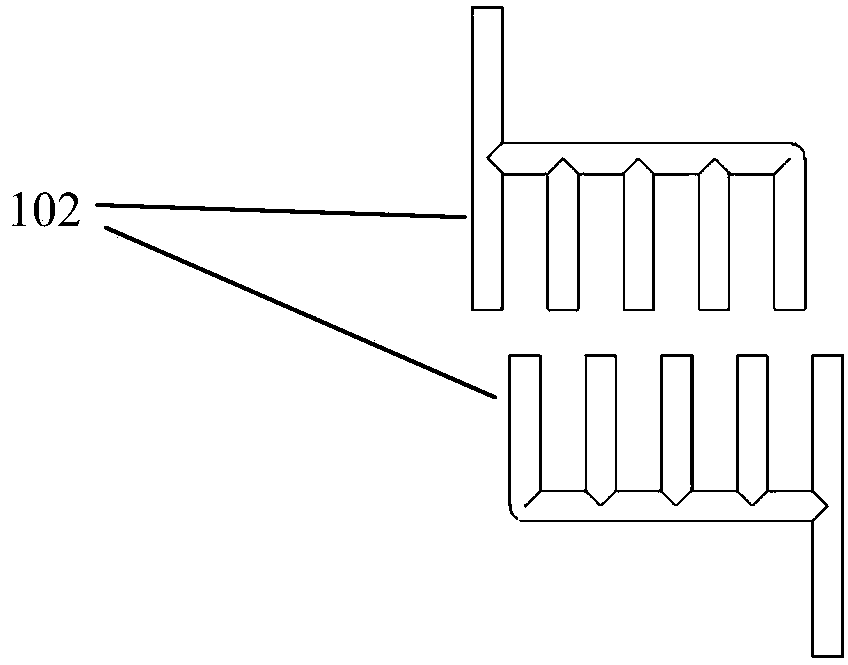Personalized bionic composite structure as well as preparation method of composite structure and method for drug screening by using composite structure
A technology of biomimetic composite structures and drugs, applied in biochemical equipment and methods, measurement/testing of microorganisms, animal cells, etc., can solve problems such as inability to fully simulate the real structure of multi-cells
- Summary
- Abstract
- Description
- Claims
- Application Information
AI Technical Summary
Problems solved by technology
Method used
Image
Examples
preparation example Construction
[0034] The preparation method of a personalized bionic composite structure provided by the present invention comprises the following steps: 1) designing a three-dimensional model of a branch vessel stent, and dividing into two groups to imitate arterial vessels and venous vessels respectively; The hydrogel of tissue cells, the prepared hydrogel containing vascular seed cells and the prepared synthetic polymer solution are loaded into different nozzles of the composite multi-nozzle 3D printing device; 3) Preparation of branch vascular scaffolds: according to step 1) The three-dimensional model of the composite multi-nozzle 3D printing equipment is used to extrude the synthetic polymer solution, and freeze-dried to remove the organic solvent, or the melt-extruded synthetic polymer material is obtained to obtain the branch vessel stent; 4) Preparation of functional tissue area: use the composite multi-nozzle The 3D printing equipment prints the prepared hydrogel containing tissue ...
Embodiment 1
[0039] Example 1: Preparation of a personalized bionic vascularized liver tissue and its application in hepatitis drug screening
[0040] 1) Preparation of cell-containing hydrogel: extract rat adipose stem cells (ADSC) and hepatocytes (Hep), and prepare cell suspension after ADSC is cultured and passaged; mix natural polymer powder with (DMEM, dulbecco's modified eagle medium) The culture solution is mixed to obtain a gelatin solution with a mass volume concentration of 10%, a sodium alginate solution with a mass volume concentration of 2%, and a fibrinogen solution with a mass volume concentration of 1%. The above gelatin solution, sodium alginate solution and fiber The volume ratio of the original protein solution was mixed at 2:2:1 to obtain a natural polymer solution for use; the ADSC and Hep suspensions were centrifuged and mixed with the natural polymer solution respectively to obtain a cell concentration of 1×10 6 Individual / mL natural polymer solution containing ADSC,...
Embodiment 2
[0045] Example 2: Preparation of a personalized bionic vascularized liver tissue and its application in hepatitis drug screening
[0046] 1) Preparation of cell-containing hydrogel: extract rat adipose stem cells (ADSC) and embryonic stem cells (ESC), and prepare cell suspension after culture and passaging; mix natural polymer powder with DMEM culture medium to obtain mass volume concentration 20% gelatin solution, 4% mass volume concentration of sodium alginate solution and 2% mass volume concentration of fibrinogen solution, the volume ratio of the above gelatin solution, sodium alginate solution and fibrinogen solution is 1:2 :1 After mixing, the natural polymer solution was obtained for use; the ADSC and ESC suspensions were centrifuged respectively, and mixed with the natural polymer solution respectively to obtain a cell concentration of 3×10 6 Individual / mL natural polymer solution containing ADSC, and the cell concentration is 1×10 5 A / mL natural polymer solution cont...
PUM
| Property | Measurement | Unit |
|---|---|---|
| thickness | aaaaa | aaaaa |
| thickness | aaaaa | aaaaa |
| thickness | aaaaa | aaaaa |
Abstract
Description
Claims
Application Information
 Login to View More
Login to View More - R&D
- Intellectual Property
- Life Sciences
- Materials
- Tech Scout
- Unparalleled Data Quality
- Higher Quality Content
- 60% Fewer Hallucinations
Browse by: Latest US Patents, China's latest patents, Technical Efficacy Thesaurus, Application Domain, Technology Topic, Popular Technical Reports.
© 2025 PatSnap. All rights reserved.Legal|Privacy policy|Modern Slavery Act Transparency Statement|Sitemap|About US| Contact US: help@patsnap.com



